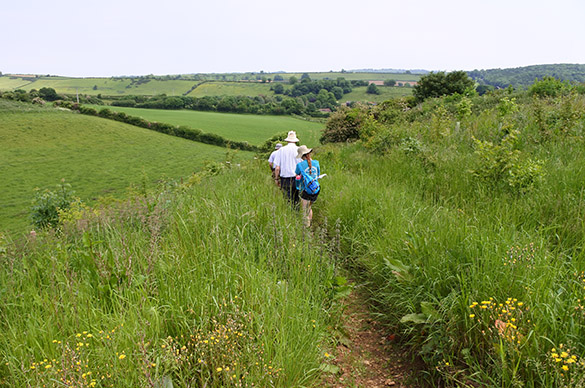 Sherborne, England — Cassidy Jester (’17) and I are now at our main base in a bed and breakfast in northern Dorset. Our lodgings are a converted milking house on an estate with a beautiful view of the surrounding rolling hills and fields around Sherborne. We met our first partner Tim Palmer yesterday in Bristol, and today we met our guide to the local stratigraphy and fossils, Bob Chandler. We were also joined by retired physician John Whicher for part of the day. Bob and John are amateur paleontologists, but that hardly seems the right label considering how long they’ve been studying the fossils in the region, and the number of papers they’ve published. They are “citizen scientists” of the highest order. We are grateful for their enthusiasm and essential assistance.
Sherborne, England — Cassidy Jester (’17) and I are now at our main base in a bed and breakfast in northern Dorset. Our lodgings are a converted milking house on an estate with a beautiful view of the surrounding rolling hills and fields around Sherborne. We met our first partner Tim Palmer yesterday in Bristol, and today we met our guide to the local stratigraphy and fossils, Bob Chandler. We were also joined by retired physician John Whicher for part of the day. Bob and John are amateur paleontologists, but that hardly seems the right label considering how long they’ve been studying the fossils in the region, and the number of papers they’ve published. They are “citizen scientists” of the highest order. We are grateful for their enthusiasm and essential assistance.
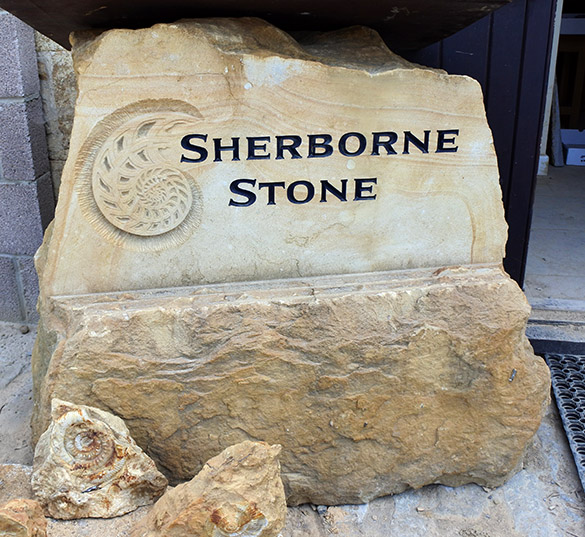 Our first stop of the day was to a quarry yard on the estate of Sherborne Castle. As always, the local quarry offices are fantastic places to start exploring the rocks of a region. The quarry operators are always keen on fossils, and usually save the best ones they find to share with visiting geologists. This particular quarry specializes in Sherborne Building Stone, part of the Middle Jurassic Inferior Oolite we are studying.
Our first stop of the day was to a quarry yard on the estate of Sherborne Castle. As always, the local quarry offices are fantastic places to start exploring the rocks of a region. The quarry operators are always keen on fossils, and usually save the best ones they find to share with visiting geologists. This particular quarry specializes in Sherborne Building Stone, part of the Middle Jurassic Inferior Oolite we are studying.
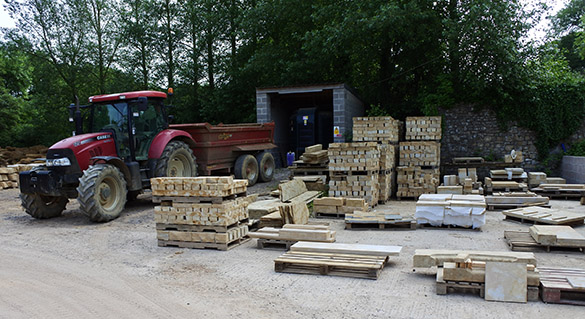 The quarry yard has many cut and polished blocks and slabs of the Sherborne stone, providing useful views of the rock interiors and cross-sections of the fossils.
The quarry yard has many cut and polished blocks and slabs of the Sherborne stone, providing useful views of the rock interiors and cross-sections of the fossils.
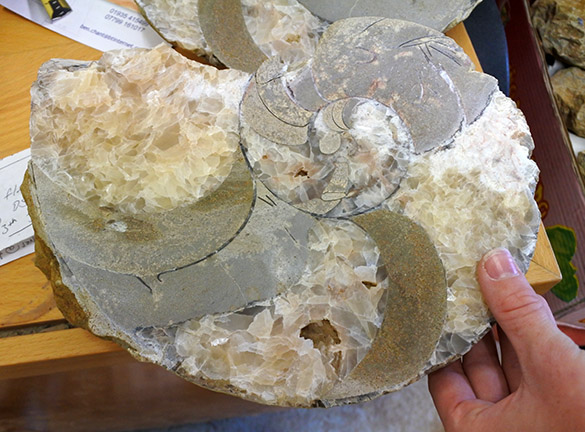 The Sherborne Building Stone and associated rocks above and below also have huge nautiloids. They make fine polished sections showing interior chambers filled with combinations of sediment and calcite cement. We found the range of infillings to be surprisingly diverse, even within a single conch.
The Sherborne Building Stone and associated rocks above and below also have huge nautiloids. They make fine polished sections showing interior chambers filled with combinations of sediment and calcite cement. We found the range of infillings to be surprisingly diverse, even within a single conch.
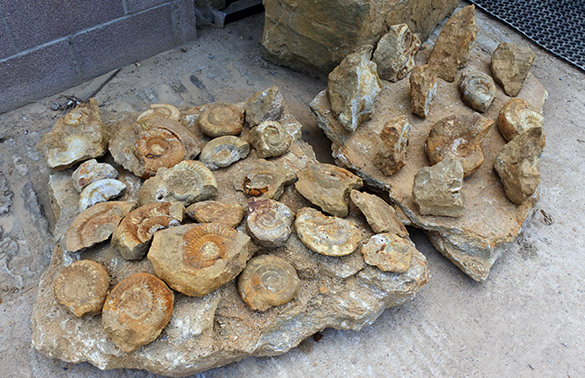 Here is a collection of ammonites the workers saved from the saws and splitters.
Here is a collection of ammonites the workers saved from the saws and splitters.
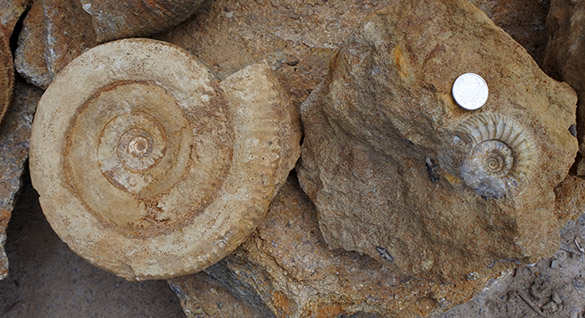 Ammonites are very common in the Sherborne quarries. On the left is the macroconch Stephanoceras with its long body chamber (the lighter-colored part) and on the right is its microconch Normannites. (Thanks to Bob Chandler for all the names.) The macroconch is most likely the female of the species, and the microconch the male, despite the different names. The ammonites are so numerous in this unit that whole breeding populations appear to be preserved.
Ammonites are very common in the Sherborne quarries. On the left is the macroconch Stephanoceras with its long body chamber (the lighter-colored part) and on the right is its microconch Normannites. (Thanks to Bob Chandler for all the names.) The macroconch is most likely the female of the species, and the microconch the male, despite the different names. The ammonites are so numerous in this unit that whole breeding populations appear to be preserved.
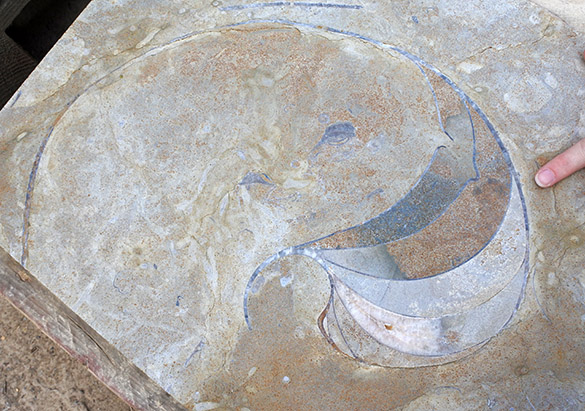 This is a polished section through one of the large nautiloids we saw in the quarry yard. Not the complex infillings of the chambers, including geopetal structures indicating the orientation of the conch when filled.
This is a polished section through one of the large nautiloids we saw in the quarry yard. Not the complex infillings of the chambers, including geopetal structures indicating the orientation of the conch when filled.
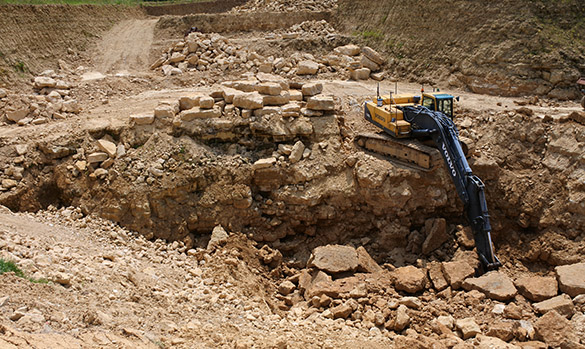 This is Frogden Quarry itself, which we visited this morning. The lower parts here contain the Sherborne Building Stone.
This is Frogden Quarry itself, which we visited this morning. The lower parts here contain the Sherborne Building Stone.
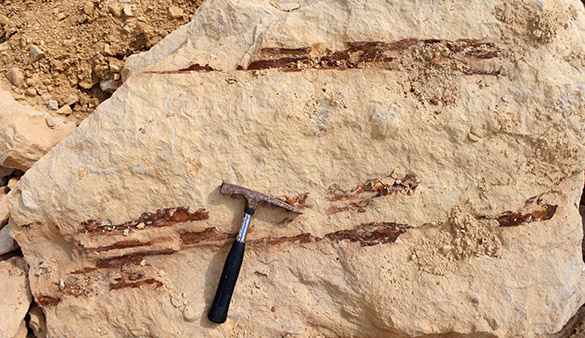 There are many other fossils in the Sherborne units, including wood that is apparently from gingko trees.
There are many other fossils in the Sherborne units, including wood that is apparently from gingko trees.
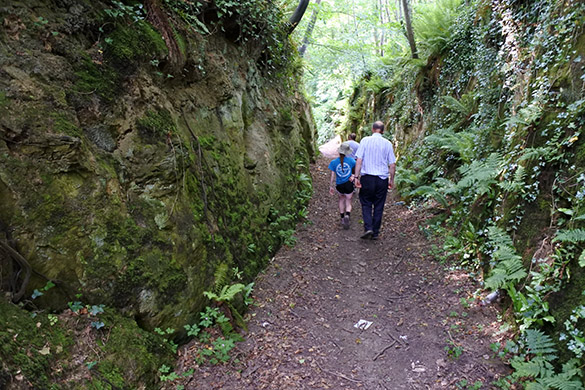 In the afternoon we visited other exposures of the Inferior Oolite and associated units, including this odd exposure on Babylon Hill. This excavation in the soft rocks of the lower Inferior Oolite and upper Lias was made by horses and carriages when this was a main road in the 19th century and earlier. A lesson in the erosion of unpaved roads without even gravel as a cover.
In the afternoon we visited other exposures of the Inferior Oolite and associated units, including this odd exposure on Babylon Hill. This excavation in the soft rocks of the lower Inferior Oolite and upper Lias was made by horses and carriages when this was a main road in the 19th century and earlier. A lesson in the erosion of unpaved roads without even gravel as a cover.
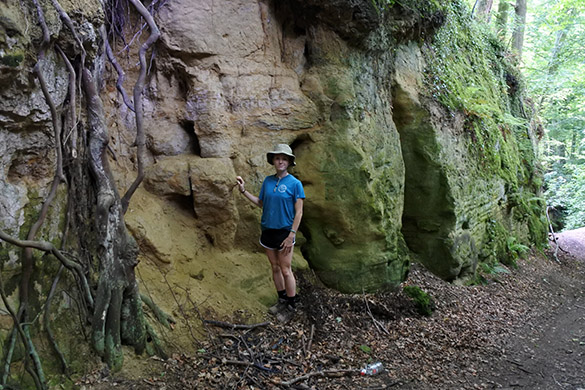 Cassidy Jester (’17) in the Babylon Hill road exposure. A poorly-cemented sand of the Upper Lias is behind her.
Cassidy Jester (’17) in the Babylon Hill road exposure. A poorly-cemented sand of the Upper Lias is behind her.
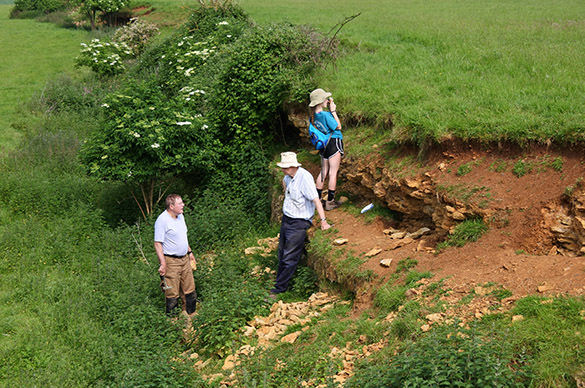 Our last stop of the day was an old abandoned quarry on Louse Hill. (It is pronounced “lows” and apparently has nothing to do with the parasite!). Bob Chandler is on the left, with Tim Palmer in the middle, and Cassidy on the right searching through the many fossils in the top of the Inferior Oolite. Not the best exposure, but a historically-important one.
Our last stop of the day was an old abandoned quarry on Louse Hill. (It is pronounced “lows” and apparently has nothing to do with the parasite!). Bob Chandler is on the left, with Tim Palmer in the middle, and Cassidy on the right searching through the many fossils in the top of the Inferior Oolite. Not the best exposure, but a historically-important one.
We ended our day of exploration with a fine meal in downtown Sherborne, followed by a walk around the local medieval abbey with its rich history and, of course, diverse building stones!
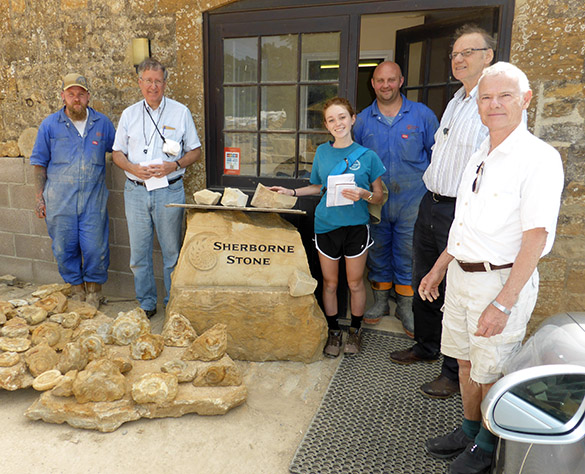 Thank you to the staff at Sherborne Stone for such fine hospitality and excellent geological observations!
Thank you to the staff at Sherborne Stone for such fine hospitality and excellent geological observations!


